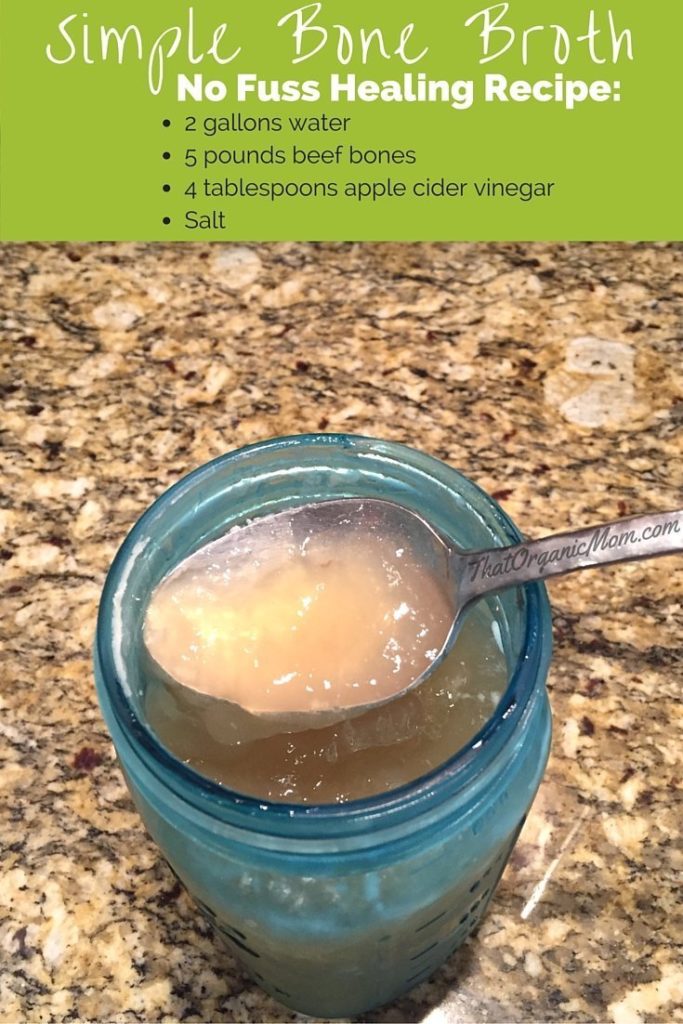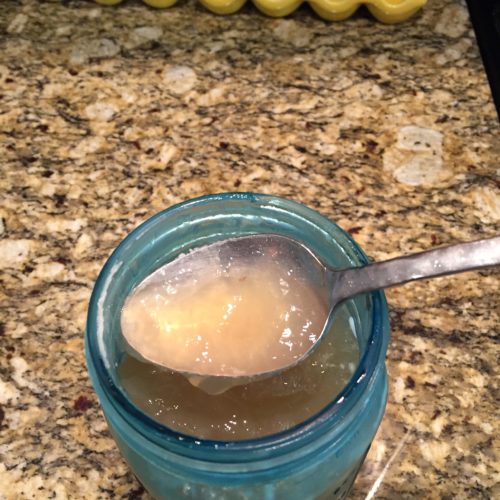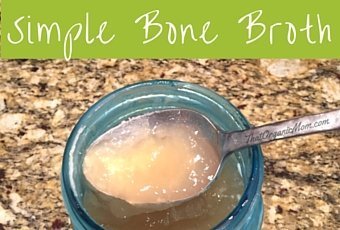Last Updated on February 14, 2021 by Rebecca Huff
Bone broth is full of flavor and nutrition, therefore cooking with broth as often as possible can be a wonderful source of nutrients. Homemade broth is rich in gelatin that will support digestion and the health of your skin. Bone broth is packed with amino acids.
Glycine (the protein that makes the broth gelatinous when chilled) is full of collagen which is anti-aging and healing for your digestive system (helps leaky gut syndrome) and builds healthy skin, hair and nails. In addition, the gelatin can reduce joint pain and inflammation, great for women in their forties like me!
If you are on a tight budget, make sure to learn how to make a good bone broth as it is a very inexpensive way to enhance dishes. Remember, bone broth is an excellent source of the vitamins and minerals needed to build strong healthy bones. This is because it is a great source of calcium, magnesium, phosphorous as well as the collagen and amino acids mentioned above.
Nursing moms can reap plenty of benefits from drinking a cup or two of bone broth daily. Not only will it support your and your baby’s immune system but also will keep your mineral levels high and help keep you hydrated.

I’ve made chicken broth mostly over the years. It’s pretty straightforward and I make chicken often throughout the week, so it only made sense to use the bones for broth.
However, making beef broth as simple it may sound, always left me second guessing my technique. I’d start with grass fed beef bones and follow broth making techniques, but somewhere along the way I felt the broth smelled, well, gross.
The SECRET:
That is until I started roasting my beef bones before making the broth. Roasting was the key for me! Once I started doing this, my broth no longer had the strange smell that left me wondering if I had done it wrong.
Here’s what I do for a simple but wonderful broth:
If at all possible purchase a variety of bones including neck, knuckle and marrow bones (if you make chicken broth, as strange as it sounds use chicken feet if you can find them). This will produce a very rich broth; however, if you can only get one variety of bones, it’s fine! I’ve even made broth with the bones leftover from ribs or steak. It’s all good.
Ingredients:
this recipe can easily be halved
- 2 gallons water
- 5-6 pounds beef bones
- 4 tablespoons apple cider vinegar
- Salt and Pepper (pepper is optional)
- Place the beef bones in a 9×13 pan, roast at 425 degrees for 45 minutes to an hour.
- Remove bones from oven.
- Using tongs, transfer to a crockpot or large heavy stock pot with about 2 gallons of filtered water.
- Add about 4 tablespoons of vinegar, I use Bragg’s Apple Cider Vinegar.
- Add a few cracks of pepper and about 2 teaspoons of Celtic or Himalayan Sea Salt.
- Bring to a boil momentarily, then reduce heat to a low simmer for 12-48 hours. I usually start mine during the day and strain it the following day so maybe 18 hours typically, but sometimes I let it go the full 48 hours.
- When I’m ready to strain I just place a large bowl in my kitchen sink and put a large strainer over it then pour through. I then strain through a fine mesh to get out all the small bits as well.
- Transfer the broth to containers. I like to use quart jars, and I always fill them inside my sink, not on the counter…just in case one ever breaks. So far so good.
- Will keep for in the fridge for one week or in the freezer for three months.
After my broth cools until the top hardens, I scoop off any fat (although I’ve noticed if you roast the bones first there is a huge reduction in fat). Also, if you roast the bones first, you can strain the beef tallow and save it to season your skillets; however, if you scrape the fat off the broth you should not save the tallow as it will go bad after a few days.
After the broth is cooled in the fridge, it actually gels up like brown Jell-O ha ha! It kind of looks wrong, but it is so right! Just put it in a pan and warm it up a bit and yum yum. It’s so warming and healthy. This is a great winter beverage that will do your body good. Although, you can drink it year round.
I know some folks who drink it at breakfast daily! I like to make simple soups with mine. For example, Miso Soup, Vegetable Soup, Breakfast Soup and French Onion. It can be used as a base for some delicious chili!
BONUS: If I have it, I also add a bay leaf, sprigs of fresh parsley or thyme. If I have it, I add in a few stalks of celery, a couple of carrots an onion or even some wilted green onions that I have in the fridge. (I usually keep a large bag in my freezer for carrot tops, the bottom of a celery bunch, onion peels, and other veggie scraps that can be made into a wonderful broth!)
Lots of people simply drink Gelatin and Collagen in their coffee or tea, and that is perfectly fine! You can get many of the same benefits from supplements. However, I highly recommend giving this simple healing recipe a try!
If you have an Instant Pot, it's even easier!
- Add bones to Instant Pot.
- Fill with filtered water (no more than 2/3 full)
- Press ‘Manual' and increase time to 120 minutes.
- When done, let the Instant Pot naturally release its steam.
- Strain and store your broth!
Don't forget to pin this post!


Simple Healing Beef Broth
Ingredients
- this recipe can easily be halved
- 2 gallons water
- 5-6 pounds beef bones
- 4 tablespoons apple cider vinegar
- Salt and Pepper pepper is optional
Instructions
- Place the beef bones in a 9×13 pan, roast at 425 degrees for 45 minutes to an hour.
- Remove bones from oven.
- Using tongs, transfer to a crockpot or large heavy stock pot with about 2 gallons of filtered water.
- Add about 4 tablespoons of vinegar, I use Bragg’s Apple Cider Vinegar.
- Add a few cracks of pepper and about 2 teaspoons of Celtic or Himalayan Sea Salt.
- Bring to a boil momentarily, then reduce heat to a low simmer for 12-48 hours. I usually start mine during the day and strain it the following day so maybe 18 hours typically, but sometimes I let it go the full 48 hours.
- When I’m ready to strain I just place a large bowl in my kitchen sink and put a large strainer over it then pour through. I then strain through a fine mesh to get out all the small bits as well.
- Transfer the broth to containers. I like to use quart jars, and I always fill them inside my sink, not on the counter…just in case one ever breaks. So far so good.
- Will keep for in the fridge for one week or in the freezer for three months.


 Summer Chipotle Chili – Gluten, Dairy and Sugar Free
Summer Chipotle Chili – Gluten, Dairy and Sugar Free
Leave a Reply
You must be logged in to post a comment.